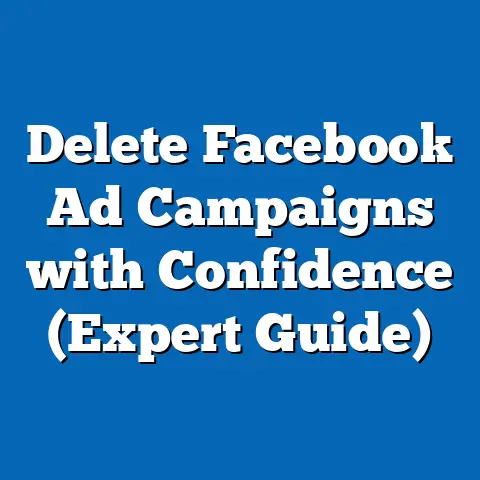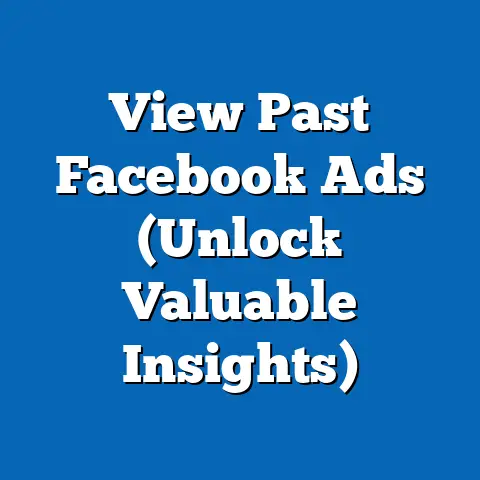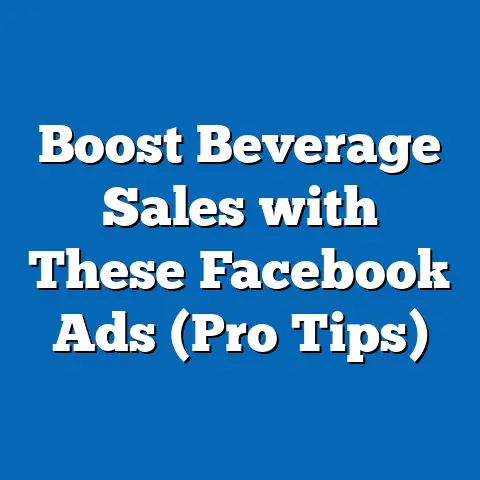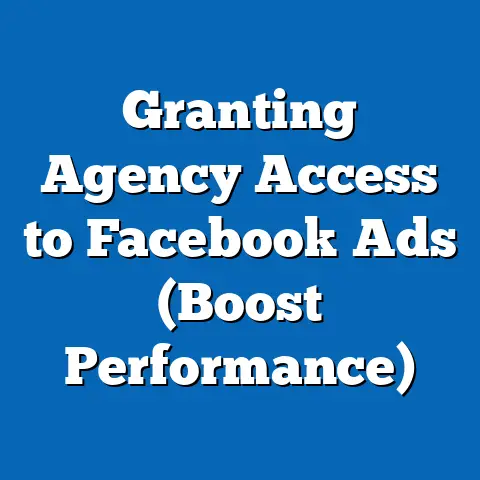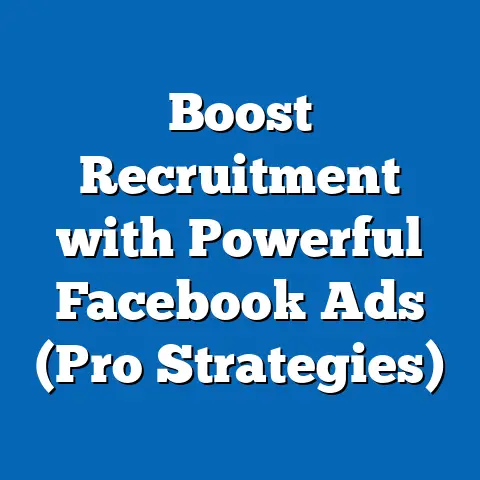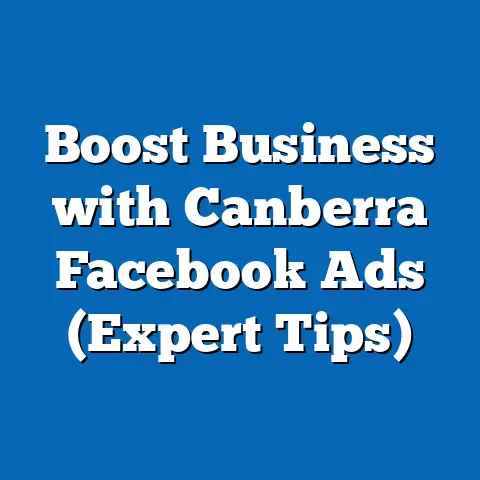Unveiling Best Facebook Ad Strategies (Game-Changing Insights)
Facebook. The name itself is synonymous with connection. As of 2024, it boasts billions of active users, a staggering number that represents a massive potential audience for businesses of all sizes. But simply being on Facebook isn’t enough. You need a robust Facebook advertising strategy to truly tap into that potential and drive meaningful results. It’s not just about throwing money at ads and hoping something sticks; it’s about understanding the platform, your audience, and the nuances of effective campaign management.
I’ve spent years navigating the ever-changing landscape of Facebook advertising, and I’ve seen firsthand what works and what doesn’t. I’ve helped businesses transform their online presence, boost their sales, and connect with their ideal customers through strategic Facebook ad campaigns. And I’m here to share those insights with you.
Expert Tip Introduction:
“The key to successful Facebook advertising lies in understanding your audience inside and out. It’s not enough to know their age or location; you need to understand their interests, their behaviors, and their pain points. The more you know, the more effectively you can target your ads and create compelling content that resonates with them.” – Mari Smith, Premier Facebook Marketing Expert
Mari Smith’s words ring true. Audience targeting is the bedrock of any successful Facebook ad campaign. Without it, you’re essentially shouting into the void, hoping someone will hear you. But with a deep understanding of your audience, you can craft targeted messages that cut through the noise and capture their attention.
1. Understanding Your Audience: The Foundation of Success
You can have the most beautifully designed ad in the world, but if you’re showing it to the wrong people, it’s going to fall flat. That’s why understanding your audience is the single most important aspect of Facebook advertising. It’s like building a house – you need a strong foundation before you can start adding the walls and roof.
The Importance of Audience Segmentation
Think of your audience not as a single, monolithic group, but as a collection of smaller, more distinct segments. Each segment has its own unique characteristics, interests, and behaviors. By segmenting your audience, you can tailor your ads to each specific group, making them more relevant and engaging.
For example, let’s say you’re selling fitness apparel. You might segment your audience based on their fitness interests:
- Yoga enthusiasts: Target them with ads featuring yoga pants and mats.
- Runners: Target them with ads featuring running shoes and apparel.
- Weightlifters: Target them with ads featuring weightlifting gloves and protein supplements.
By segmenting your audience in this way, you can create ads that speak directly to their needs and interests, increasing the likelihood of them clicking and converting.
Leveraging Facebook’s Audience Insights Tool
Facebook’s Audience Insights tool is a goldmine of information about your target audience. It allows you to gather data on demographics, interests, behaviors, and more. You can access this tool through your Ads Manager.
Here’s how I use it:
- Define your target audience: Start by thinking about your ideal customer. What are their demographics (age, gender, location)? What are their interests? What pages do they like on Facebook?
- Enter your criteria into Audience Insights: Plug in your criteria and let Facebook do its magic. The tool will generate a report showing you the demographics, interests, behaviors, and page likes of people who match your criteria.
- Analyze the data: Look for patterns and trends. What are the top interests of your target audience? What pages do they like the most? What devices do they use to access Facebook?
- Use the data to inform your ad targeting: Use the insights you’ve gained to refine your ad targeting. Target your ads to people who match the demographics, interests, and behaviors of your ideal customer.
I remember working with a local bakery that wanted to increase its online orders. Using Audience Insights, we discovered that their target audience was primarily women aged 25-45 who were interested in baking, cooking, and healthy eating. We then created ads featuring mouthwatering photos of their baked goods and targeted them specifically to this audience. The result? A significant increase in online orders and a boost in their overall revenue.
Real-World Examples of Effective Audience Targeting
- Nike: Nike often uses audience targeting to reach specific groups of athletes. For example, they might target runners with ads featuring their latest running shoes or basketball players with ads featuring their latest basketball gear.
- Sephora: Sephora uses audience targeting to reach beauty enthusiasts. They might target women aged 18-35 who are interested in makeup, skincare, and beauty products.
- Airbnb: Airbnb uses audience targeting to reach travelers. They might target people who are interested in travel, adventure, and unique accommodations.
Key Takeaway: Understanding your audience is the foundation of successful Facebook advertising. Use audience segmentation and Facebook’s Audience Insights tool to gather data on your target audience and create targeted ads that resonate with them.
2. Crafting Engaging Ad Content: The Key to Capturing Attention
Once you’ve identified your target audience, the next step is to create engaging ad content that captures their attention. In today’s digital world, people are bombarded with ads every day. To stand out, your ads need to be visually appealing, informative, and persuasive.
The Elements of Compelling Ad Copy
Your ad copy is your chance to tell your story and convince people to take action. Here are some key elements to consider:
- Headline: Your headline is the first thing people will see, so it needs to be attention-grabbing and relevant. Use strong verbs, numbers, and questions to pique their interest.
- Description: Your description should provide more detail about your product or service and highlight its benefits. Focus on how it will solve their problems or improve their lives.
- Call to action (CTA): Your CTA tells people what you want them to do next. Use clear and concise language, such as “Shop Now,” “Learn More,” or “Sign Up.”
I’ve found that using a sense of urgency in my ad copy often leads to higher click-through rates. For example, instead of saying “Shop Now,” I might say “Shop Now and Get 20% Off for a Limited Time!”
The Role of Visuals in Facebook Ads
Visuals are just as important as your ad copy. In fact, some studies have shown that ads with high-quality images and videos perform significantly better than ads with text alone.
Here are some tips for using visuals effectively:
- Use high-quality images and videos: Avoid blurry or pixelated images. Use professional-quality visuals that showcase your product or service in the best light.
- Use relevant visuals: Choose visuals that are relevant to your target audience and your ad copy.
- Use eye-catching visuals: Use visuals that are visually appealing and that will stand out in the newsfeed.
I once worked with a clothing boutique that was struggling to get traction with their Facebook ads. After reviewing their ads, I realized that their visuals were outdated and unappealing. We decided to invest in professional-quality photos of their clothing, and the results were dramatic. Their click-through rates and conversion rates skyrocketed, and they saw a significant increase in sales.
Case Studies of Well-Crafted Ad Content
- Dollar Shave Club: Dollar Shave Club’s ads are known for their humor and wit. They use funny videos and clever ad copy to promote their shaving products.
- Old Spice: Old Spice’s ads are also known for their humor and wit. They use over-the-top visuals and quirky ad copy to promote their grooming products.
- GoPro: GoPro’s ads feature stunning videos and photos of people using their cameras in extreme environments. They use visuals to showcase the capabilities of their products.
Key Takeaway: Crafting engaging ad content is essential for capturing attention and driving results. Use compelling ad copy, high-quality visuals, and a clear call to action to create ads that resonate with your target audience.
3. Leveraging Ad Formats and Features: Maximizing Impact
Facebook offers a variety of ad formats and features that can help you maximize the impact of your campaigns. Understanding these options and using them strategically is crucial for achieving your advertising goals.
Exploring Different Ad Formats
- Carousel Ads: Carousel ads allow you to showcase multiple images or videos in a single ad. This format is great for showcasing a variety of products or highlighting different features of a single product.
- Slideshow Ads: Slideshow ads are similar to carousel ads, but they use a series of still images to create a video-like experience. This format is great for creating visually appealing ads on a budget.
- Collection Ads: Collection ads are designed for e-commerce businesses. They allow you to showcase a collection of products in a visually appealing format, making it easy for users to browse and purchase.
I’ve found that carousel ads are particularly effective for showcasing product variations. For example, if you’re selling shoes, you can use a carousel ad to showcase different colors, styles, and sizes.
The Benefits of Dynamic Ads
Dynamic ads are personalized ads that are automatically generated based on a user’s behavior on your website or app. For example, if a user views a specific product on your website, they might see a dynamic ad featuring that product on Facebook.
Dynamic ads are a powerful way to re-engage users who have shown interest in your products or services. They can also help you increase sales by showing users products they are likely to be interested in.
Effective Use of Facebook Stories and Reels for Advertising
Facebook Stories and Reels are short-form video formats that are incredibly popular among younger audiences. These formats offer a unique opportunity to connect with your target audience in a fun and engaging way.
Here are some tips for using Facebook Stories and Reels for advertising:
- Keep it short and sweet: Stories and Reels are designed to be short and attention-grabbing. Keep your videos under 15 seconds.
- Use visually appealing content: Use high-quality visuals that are relevant to your target audience.
- Use music and sound effects: Music and sound effects can help to make your videos more engaging.
- Use interactive elements: Use interactive elements, such as polls and quizzes, to encourage engagement.
I’ve seen businesses successfully use Facebook Stories to showcase behind-the-scenes content, product demos, and customer testimonials.
Key Takeaway: Facebook offers a variety of ad formats and features that can help you maximize the impact of your campaigns. Experiment with different formats to see what works best for your business.
4. Implementing A/B Testing: Refining Your Ad Strategies
A/B testing, also known as split testing, is a crucial process for refining your ad strategies and maximizing your ROI. It involves creating two versions of an ad (A and B) and testing them against each other to see which one performs better.
The Significance of A/B Testing
A/B testing allows you to make data-driven decisions about your ad campaigns. Instead of relying on guesswork, you can use real data to determine what works best for your target audience.
For example, you might test two different headlines, two different images, or two different calls to action. By tracking the performance of each version, you can identify the elements that are most effective and use them in your future campaigns.
Setting Up an A/B Test on Facebook
Facebook makes it easy to set up an A/B test. Here’s how:
- Create two versions of your ad: Create two versions of your ad, making sure to change only one element at a time. For example, you might change the headline but keep everything else the same.
- Set up your A/B test in Ads Manager: In Ads Manager, select the “A/B Test” objective.
- Define your test parameters: Choose the element you want to test, the audience you want to target, and the duration of your test.
- Monitor your results: Track the performance of each version of your ad and identify the winner.
I recommend testing one element at a time to get the most accurate results. For example, if you test both the headline and the image at the same time, it will be difficult to determine which element is responsible for the change in performance.
Success Stories of Improved Ad Performance Through Testing
- A clothing retailer: A clothing retailer used A/B testing to determine the best call to action for their Facebook ads. They tested “Shop Now” against “Learn More” and found that “Shop Now” resulted in a significantly higher click-through rate.
- A software company: A software company used A/B testing to determine the best image for their Facebook ads. They tested a photo of their product against a photo of a happy customer and found that the photo of the happy customer resulted in a significantly higher conversion rate.
- A restaurant: A restaurant used A/B testing to determine the best headline for their Facebook ads. They tested “Delicious Pizza” against “Best Pizza in Town” and found that “Best Pizza in Town” resulted in a significantly higher click-through rate.
Key Takeaway: A/B testing is a crucial process for refining your ad strategies and maximizing your ROI. Use it to make data-driven decisions about your ad campaigns and identify the elements that are most effective for your target audience.
5. Budgeting and Bidding Strategies: Optimizing Your Ad Spend
Setting a clear budget and understanding Facebook’s bidding options are essential for optimizing your ad spend and maximizing your ROI. It’s not just about spending the most money; it’s about spending it wisely.
The Importance of Setting a Clear Budget
Before you start running Facebook ads, it’s important to set a clear budget. This will help you stay on track and avoid overspending.
Here are some factors to consider when setting your budget:
- Your advertising goals: What are you trying to achieve with your Facebook ads? Are you trying to increase brand awareness, generate leads, or drive sales?
- Your target audience: How large is your target audience? The larger your target audience, the more you’ll need to spend to reach them.
- Your industry: What is the average cost per click (CPC) in your industry? Some industries are more competitive than others, which means you’ll need to spend more to get noticed.
I always recommend starting with a small budget and gradually increasing it as you see results. This will allow you to test different strategies and optimize your campaigns without breaking the bank.
Understanding Facebook’s Bidding Options
Facebook offers a variety of bidding options, including:
- Cost per click (CPC): You pay each time someone clicks on your ad.
- Cost per thousand impressions (CPM): You pay each time your ad is shown to 1,000 people.
- Cost per action (CPA): You pay each time someone takes a specific action, such as making a purchase or signing up for a newsletter.
The best bidding option for you will depend on your advertising goals and your budget. If you’re trying to generate leads, CPA bidding might be the best option. If you’re trying to increase brand awareness, CPM bidding might be a better choice.
Allocating Budgets Effectively Across Campaigns and Target Segments
It’s important to allocate your budget effectively across your campaigns and target segments. This means spending more money on the campaigns and segments that are performing the best and less money on the campaigns and segments that are not performing as well.
I use Facebook’s Ads Manager to track the performance of my campaigns and segments and make adjustments to my budget accordingly. I also use A/B testing to identify the most effective strategies and allocate more budget to those strategies.
Insights into Optimizing Ad Spend Based on Performance Analytics
- Monitor your key metrics: Keep a close eye on your click-through rates, conversion rates, and return on ad spend.
- Adjust your budget based on performance: Increase your budget for campaigns that are performing well and decrease your budget for campaigns that are not performing as well.
- Use A/B testing to optimize your campaigns: A/B test different strategies to identify the most effective approaches.
- Don’t be afraid to experiment: Try new things and see what works best for your business.
Key Takeaway: Setting a clear budget and understanding Facebook’s bidding options are essential for optimizing your ad spend and maximizing your ROI. Use performance analytics to track your results and make adjustments to your budget accordingly.
6. Analyzing and Interpreting Data: Turning Insights into Action
Running Facebook ads is only half the battle. The other half is analyzing and interpreting the data you collect to make informed decisions and optimize your campaigns.
Key Metrics to Monitor
- Click-Through Rate (CTR): The percentage of people who see your ad and click on it. A high CTR indicates that your ad is relevant and engaging.
- Conversion Rate: The percentage of people who click on your ad and take a desired action, such as making a purchase or signing up for a newsletter. A high conversion rate indicates that your landing page is effective.
- Return on Ad Spend (ROAS): The amount of revenue you generate for every dollar you spend on advertising. A high ROAS indicates that your ad campaigns are profitable.
- Cost Per Acquisition (CPA): The cost of acquiring a new customer through your ad campaigns. A low CPA indicates that your ad campaigns are efficient.
Using Facebook Ads Manager to Track Performance
Facebook Ads Manager provides a wealth of data about your ad campaigns. You can use it to track your key metrics, identify trends, and make adjustments to your campaigns.
Here are some of the things you can do with Facebook Ads Manager:
- Track your key metrics: View your click-through rates, conversion rates, and return on ad spend.
- Segment your data: Segment your data by demographics, interests, and behaviors to see how different groups are responding to your ads.
- Create custom reports: Create custom reports to track the metrics that are most important to you.
- Export your data: Export your data to a spreadsheet for further analysis.
Pivoting Strategies Based on Analytics
The key to successful Facebook advertising is to be flexible and adapt your strategies based on the data you collect. If you see that a particular ad is not performing well, don’t be afraid to make changes.
Here are some things you can do to pivot your strategies:
- Change your ad copy: Try using a different headline or description.
- Change your visuals: Try using a different image or video.
- Change your targeting: Try targeting a different audience.
- Change your bidding strategy: Try using a different bidding option.
I once had a campaign that was performing poorly. After analyzing the data, I realized that my target audience was too broad. I narrowed my target audience and my performance improved dramatically.
Key Takeaway: Analyzing and interpreting data is essential for optimizing your Facebook ad campaigns. Use Facebook Ads Manager to track your key metrics, identify trends, and make adjustments to your strategies accordingly.
7. Staying Updated with Trends and Changes: The Key to Long-Term Success
The world of Facebook advertising is constantly evolving. New features, new algorithms, and new best practices are constantly emerging. To stay ahead of the curve, it’s important to stay updated with the latest trends and changes.
The Importance of Keeping Up with the Evolving Landscape
Facebook is constantly making changes to its advertising platform. These changes can impact everything from your ad targeting to your bidding strategies. If you’re not aware of these changes, you could be wasting your money on ineffective campaigns.
I make it a point to stay updated with the latest Facebook advertising news and best practices. I read industry blogs, attend webinars, and follow leading experts on social media.
Recent Updates and Changes to Facebook’s Ad Policies and Algorithms
- Privacy updates: Facebook is constantly making changes to its privacy policies. These changes can impact your ability to target specific audiences.
- Algorithm changes: Facebook’s algorithm is constantly evolving. These changes can impact the reach and effectiveness of your ads.
- New ad formats: Facebook is constantly introducing new ad formats. These formats can offer new opportunities to connect with your target audience.
Resources for Staying Informed
- Facebook’s Business Help Center: This is the official source for information about Facebook advertising.
- Industry blogs: There are many industry blogs that cover Facebook advertising news and best practices.
- Social media: Follow leading experts on social media to stay updated with the latest trends and changes.
- Webinars and conferences: Attend webinars and conferences to learn from industry experts.
Key Takeaway: Staying updated with the latest trends and changes in Facebook advertising is essential for long-term success. Make it a point to stay informed about new features, new algorithms, and new best practices.
Conclusion: Your Path to Facebook Ad Mastery
Facebook advertising is a powerful tool that can help businesses of all sizes achieve their marketing goals. By understanding your audience, crafting engaging ad content, leveraging ad formats and features, implementing A/B testing, optimizing your ad spend, analyzing data, and staying updated with trends and changes, you can create impactful Facebook ad campaigns that drive real results.
I encourage you to implement these strategies and monitor your results. Don’t be afraid to experiment and try new things. The key to success is to be flexible and adapt your strategies based on the data you collect.
Remember, Facebook advertising is an ongoing process. It requires constant learning, testing, and optimization. But with the right strategies and a commitment to continuous improvement, you can achieve your advertising goals and grow your business. Good luck!

